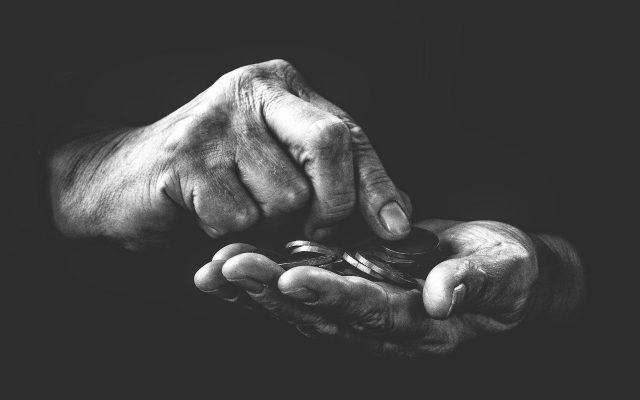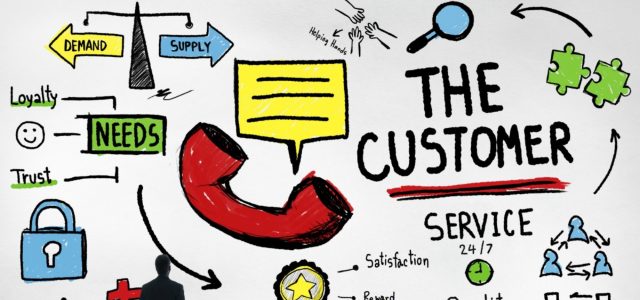Before embarking on this intellectual article, I must make an important premise for everyone who will read it. Inside, a nonprofit company will be mentioned that will help me throughout my study.
Obviously, the quotes were not made for advertising purposes or personal acknowledgements, but only in order to be able to explain, what can be done in the “Digital” sphere in undeveloped countries.
I would also like to reiterate that, like the company mentioned, there are other companies on the market that are equally committed to this problem.
Part 1
Every year, 9 million children die before their fifth birthday1, in about 25 countries, most of them in Sub-Saharan Africa, the average life expectancy is no more than fifty-five years, and in India alone, more than 50 million children cannot read a simple text2.
As already explained by Jeffrey Sachs, director of the Earth Institute at Columbia University in New York City, the worst problem of least developed countries is the “poverty trap”3, the mechanism that makes it very difficult for people to escape poverty, the lack of finding virtuous initial investments.
From these alarming data, the idea of creating not only a technology / non-finance enterprise but also a dream for the small enterprise stakeholders.
The entrepreneurial innovation that particularly influenced me is that of TechnoServe, which is an international non-profit organization that provides business solutions to poverty. The main job of this company is to connect enterprising people to information, partners and markets.
Today’s real challenge is precisely to get out of the previously mentioned “poverty trap” phenomenon with international connections and investments. From January 2016, TechnoServe is working to increase the profitability of 840 high potential people shops in Nairobi-Kenya through a program called Smart Duka. They work in 29 countries, the company works with enterprising men and women in developing countries to build competitive farms, businesses and industries.
Very important is the connection they provide between people, capitals and markets, helping millions of people create lasting prosperity for their families and communities, harnessing the power of the private sector to help people out of poverty.
Particular and unusual, in this type of non-profit companies is the care and methodology of calculations, management and study, with the most rigorous and economic methods possible for measuring the chosen objective, with the aim of reporting only the impact that is attributable to their work, establishing basic data and using counterfactuals, dual diligence groups, effectively excluding the effects of the variables outside their control. Identifying successful project models by improving future approaches.
According with Autio at al. (2014)4, that suggests that to determine the success of entrepreneurial innovation, we can examine the individual, the team and the behavior and choices of the resulting company and how these influence the predefined performance indicators of the entrepreneurial innovation, my choice was made exactly in that direction, examining not only the idea, but also the team of people working on the different projects in the 29 Countries and analyzing the latest report of 2018, underlining an expansion and diversity of projects and customers, expanding support for small and growing companies.
In 2018, they raised over $30 million in funding for entrepreneurial programs, a three-fold increase over 2015. This funding helps small businesses accelerate their growth. In my chosen case, the real entrepreneurial choice is that of having behind not only very large financial groups, like investors but also small private individuals or associations, which are fundraising through crowdfunding and which are almost 40% of the total invested.
Innovation is that of being able to invest all the money in the future, without having the problem of financial returns and different asset allocation.
According to the UNSDG’s that in September 2015, the General Assembly adopted the 2030 Agenda for Sustainable Development that includes 17 Sustainable Development Goals (SDGs). Building on the principle of “leaving no one behind”5, the new Agenda emphasizes a holistic approach to achieving sustainable development for all.
I directed the chosen company towards these points, obviously, it was not possible to do it with everyone, but the surprising thing was the many points in common. Finally, I chose the one related to the reduction of inequalities. Obviously the most direct, connected and associated challenge was, obviously, linked to poverty.
The main challenge chosen, is about the ‘Poverty’, and trying to reduce it, and trying to increase the spendable basis for each person, per day. In particular, taking as a starting point the concept of bottom-of-pyramid (BoP)6, that is, that part of the world population (about four billion), living on less than $2.5 per day.
Four billion poor people constitute a staggering market opportunity, but without income and transaction capacity, the poor are locked into poverty, as already referred to in the concept of “poverty trap”.
According to Bradley et al. (2012)7, define poverty as the imbalance in the allocation of resources, with four interconnected factors: individual and cultural deficiency, structural failing, and a capacity or opportunity deficiency. The focus for TechnoServe is to redistribute resources equitably, financial in our case, trying to lower the average level of poverty, leading to less “poor decision ” supporting and motivating a necessary education to overcome personal deficiencies.
Trying to reduce the government gap, regarding the failure to create an economy, capable of equitably distributing of opportunities. With micro-credit injections to SME’s (medium-sized enterprises), as well as increasing education, the cultural base also increases, not only focused on the most basic work but also on the creation of an obviously sustainable business.
In terms of a capacity or opportunity deficiency, if we analyze the concept already mentioned before about the bottom-of-pyramid (BoP), we will find many interesting connections, on as a company like TechnoServe is trying to raise the average level per day, in terms of money, not with simple donations, they would have a very short average life (in terms of investment), but investing on solid foundations.
In all projects, from Nairobi to Nicaragua, for example, all their projects are designed to create a lasting impact. The approach does not focus on providing aid: they provide customers with new information, new skills and new connections with funding and markets. These are things that, once provided, can never be removed, so the impact of TechnoServe lasts long after the end of their projects.
I chose this challenge, because I am sure, even from competences already established, that the real challenge to fight poverty is not the only aid support, important of course, and fundamental, for survival in the short period, interesting debate on this concept between J.Sachs (2005)8 and W.Eastely (2006)9, but above all the long-term structural investments.
Part 2
The framework analyzed starts with the “Triple Bottom Line” theory, a theory that recommends companies to focus on social and environmental concerns just as they do on profits. Assuming three bottom lines: profit, people and planet.
Evaluating the level of commitment of a company towards corporate social responsibility and its impact on the environment over time. By John Elkington, (1994)10 managing not only gaining financial profits, but also managing and improving the lives of people and the planet.
All of this is directly related to the theory of “sustainability”, according to Crane and Matt (2007, p.24)11, which “refers to the long-term system maintenance according to environmental, economic and social consideration”.
Relevant to the task of my challenge, because without a framework – TBL and sustainability, obviously long term – the foundations would be lacking, for the search for a solution to poverty, in structural terms, and in terms of duration.
Starting from the “Triple Bottom Line” theory, where the three main points are: economic / financial value, production of environmental and social value, the innovation of TechnoServe is very much connected close to this theory.
First of all, I would analyze the financial side, where the real innovation of this “non-profit” company, unlike other “profit”, mainly that of not having only big financial investors or big international companies behind them but extend a large share of support even by private individuals.
The second real innovation is not to be a slave to financial returns, or a financial agreement with any bank or big financial mayor. From the economic point of view, on the other hand, the real innovation is not only to give help, but above all to increase the economic base of $2.50 per day which, in fact, is the true factor of poverty that traps today, 4 billion people in the world.
Within the commercial approach, TechnoServe’s entrepreneurial innovation is to give importance to environmental sustainability, working to strengthen the resilience of farmers, entrepreneurs and businesses, supporting farmers and small businesses to improve the health of their local environment, in organic practices where possible, working with policymakers, government institutions to create a system in which environmental protection is a central point of environmental innovation for a healthy and profitable market system.
The social value that the innovation of this enterprise is absolutely unique, as going against the most elementary donation of aid, which in the short term could make sense, only from an economic and not a social point of view, invests not on the individual aid, but on the project, on information, on technology and teaching of the most useful and indispensable theories and concepts, today there are over 300 million small and medium-sized enterprises (SMEs) in developing countries where TechnoServe it operates, which contribute up to 40% of national GDP.
Innovation is to provide long-term support with the aim of offering more life opportunities to themselves, their families and their communities. These companies promote local development, thanks to the support given by TechnoServe creating jobs for many low-income people; the main suppliers of basic goods and services in poor or isolated communities.
Sustainability is another primary point, they do it by helping to develop skills, relationships, products and services, focusing on the long term, continuing to use the services funded for years after they started, because they continue to make sense of business for every one of the subjects involved.
After their programs have shown that a new innovation is profitable and commercially viable, market demand and private sector companies help to ensure that it reaches more farmers, entrepreneurs and workers.
In conclusion, the case study that I analyzed shows a strong business not-for-profit component. The innovation was analyzed and evaluated according to Autio’s theory, relating the three main points of this business: the individual, the team and the environment.
The business, on the other hand, has been linked to UNSDG’s, and to the search for the reduction of inequalities, choosing poverty reduction as the main challenge. Using Bradley’s theory as a starting point and relating the problem and possible solutions with the BoP (Bottom of Pyramid).
Finally, thanks to the theory of Crane and Matt about the sustainability and the “Triple Bottom Line”, I related sustainability to economic / financial and social values.
References
- United Nation, department of Economic and Social Affairs, The Millennium Development Goals Report (2010).
- Pratham Annual Status of Education Report 2005: Final Edition , available at http://scripts.mit.edu/~varun_ag/readinggroup/images/1/14/ASER.pdf
- Jeffrey Sachs, The End of Poverty: Economic Possibilities for Our Time (New York: Penguin Press, 2005)
- Autio, E. Kenney, M., Mustar, P., Siegel, D. and Wright, M. (2014) “Entrepreneurial Innovation: The important of context”, Research Policy43, no. 7, pp. 1097-1108.
- org. (2019). #Envision2030: 17 goals to transform the world for persons with disabilities | United Nations Enable. [online] Available at: https://www.un.org/development/desa/disabilities/envision2030.html [Accessed 27 Nov. 2019].
- Toindepi, J. (2016) Investigating a best practice model of microfinance for poverty alleviation. International Journal of Social Economics 43 (4): 346-362
- Bradley, S.W., McMullen, J.S., Artz, K. and Simiyu, E. M. (2012) “Capital Is Not Enough: Innovation in Developing Economies” Journal of Management Studies, vol. 49, no. 4, pp. 684-717.
- Jeffrey Sachs, The End of Poverty: Economics Possibilities for Our Time (New York: Penguin Press, 2005).
- William Easterly, The White Man’s Burden: Why the West’s Efforts to Aid the Rest Have Done So Much Ill and So Little Good (Oxford: Oxford University Press, 2006); and William Easterly, The Elusive Quest for Growth: Economists’ Adventures and Misadventures in the Tropics (Cambridge: MIT Press, 2001)
- Elkington, J. (1998) Cannibals with forks: the triple bottom line of 21st century business, Oxford, Capstone.
- Crane, A. and Matten, D. (2007) Business Ethics: managing corporate citizenship and sustainability in the age of globalization, Oxford, Oxford University Press, pp.20-8.
Article by channel:
Everything you need to know about Digital Transformation
The best articles, news and events direct to your inbox
Read more articles tagged: Featured, Innovation, Strategy









